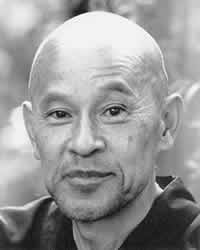 TDL
inscription in Steve Frost book
TDL
inscription in Steve Frost bookSteve Frost cuke page
cuke.com - Shunryu Suzuki Index - WHAT'S NEW - table of contents
 TDL
inscription in Steve Frost book
TDL
inscription in Steve Frost book
Steve Frost cuke page
|
6-11-13 - A year ago posted this query. The answer sank in the Post on Cuke list to be forgotten till Steve lost it, asked if we could find it, and so here it is. 8-23-12 - Father Steve Frost sends this query: How's your Tibetan? Here's a 'note' and inscription the Dalai Lama wrote in my Kalachakra book. If I ever knew what it says, I don't know now. Just curious. And finally, the responses: Mary Cunov's reply: Steve has added the translation of the inscription "to Rationale V If you want to see, scroll down to where the pictures start there a link to the inscription as well the translation in the blog." REV. STEPHEN W. FROST Ph.D. Easter Message 2013 his Nepsis site - don't miss the art Andrew Main sends a comment on the note and inscription the Dalai Lama wrote in Steve Frost's Kalachakra book (see above). That Dalai Lama inscription is interesting; the top three lines (which Mary's friend and Lewis Lancaster seem to translate rather differently?) is written in a quick pen version of the standard U-Chen printed Tibetan script (used not only in printed religious works, but in secular material like books, newspapers, signs, etc.): <http://en.wikipedia.org/wiki/Uchen>Even I can make out many of the letters, though some are mysterious because they appear to be special letters used only to write Sanskrit words. But maybe the inscription is something traditional with Sanskrit words, or entirely in Sanskrit. Since the Tibetan "alphabet" is based on a NW Indian script of the mid-first-millennium, Sanskrit texts can be written directly in Tibetan letters (with the addition of a few special letters used only for sounds which appear in Sanskrit but not in Tibetan). Thus the written scriptures of Tibetan Buddhism comprise both Tibetan translations of Sanskrit materials (as well as original materials written in Tibetan), and the original Sanskrit materials themselves; and it is from the latter (as well as Chinese translations, and maybe Chinese "transliterations" where Chinese characters are used to [very roughly] represent Sanskrit sounds--I'm not sure about this) that many Mahayana scriptures, their Sanskrit originals lost in India a thousand years ago, have been reclaimed. The bottom part of the Dalai Lama's inscription is in a less formal "handwriting" style, one of numerous "U-me" ("headless") styles of Tibetan used mostly in handwriting. <http://en.wikipedia.org/wiki/UmÍ_script> In this case, HHDL's umÍ writing is considerably enhanced by his personal flourishes, such that only someone familiar with his handwriting would be able to read it (which would presumably include Lewis Lancaster; or maybe he just knows how HHDL signs things). A variety of Tibetan script styles can be seen on the right side of this page; about halfway down is one similar to HHDL's handwriting: <http://www.yalasoo.com/Tibetan/yalasoo_bo_home.php> (Both Windows and Mac versions of these fonts can be downloaded from this site.) Andrew |